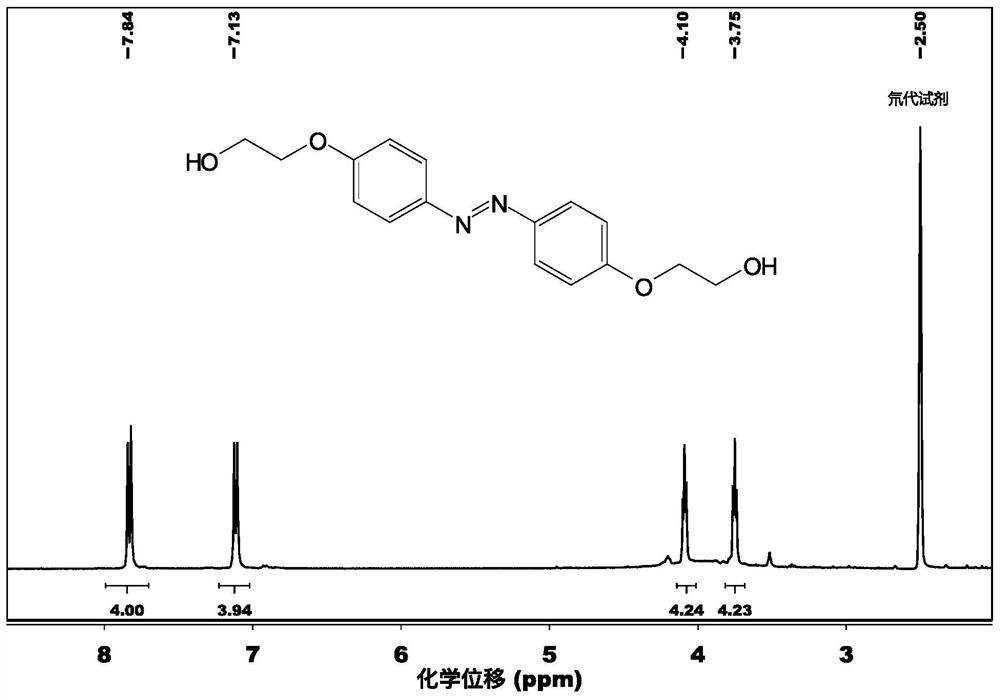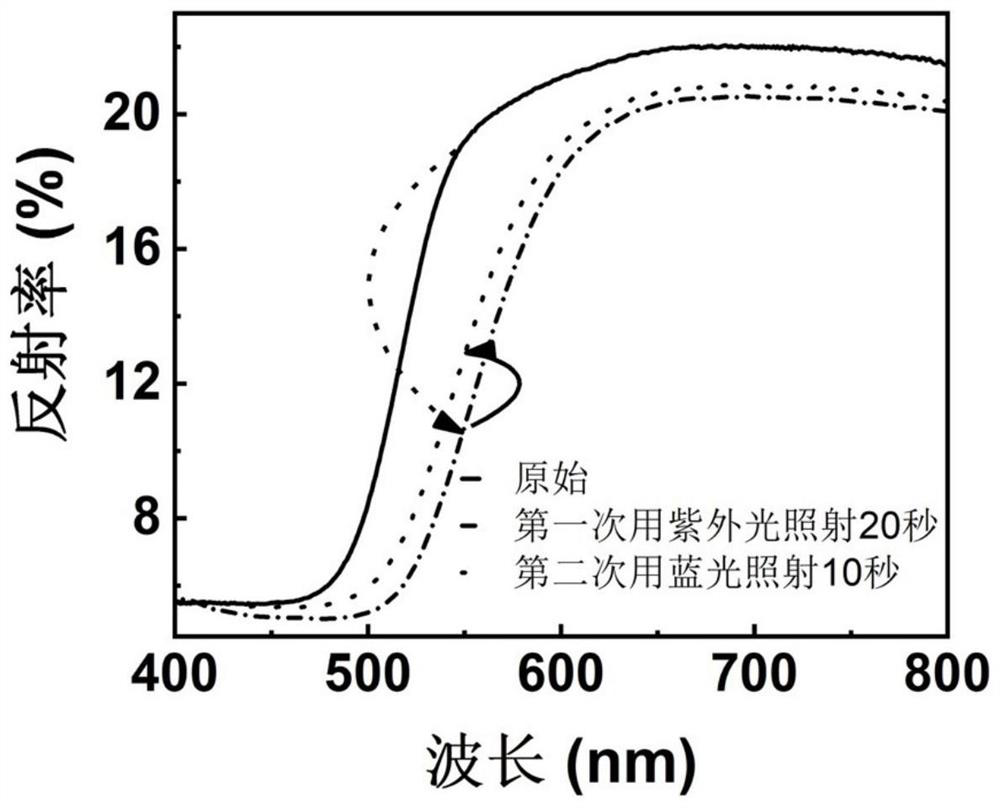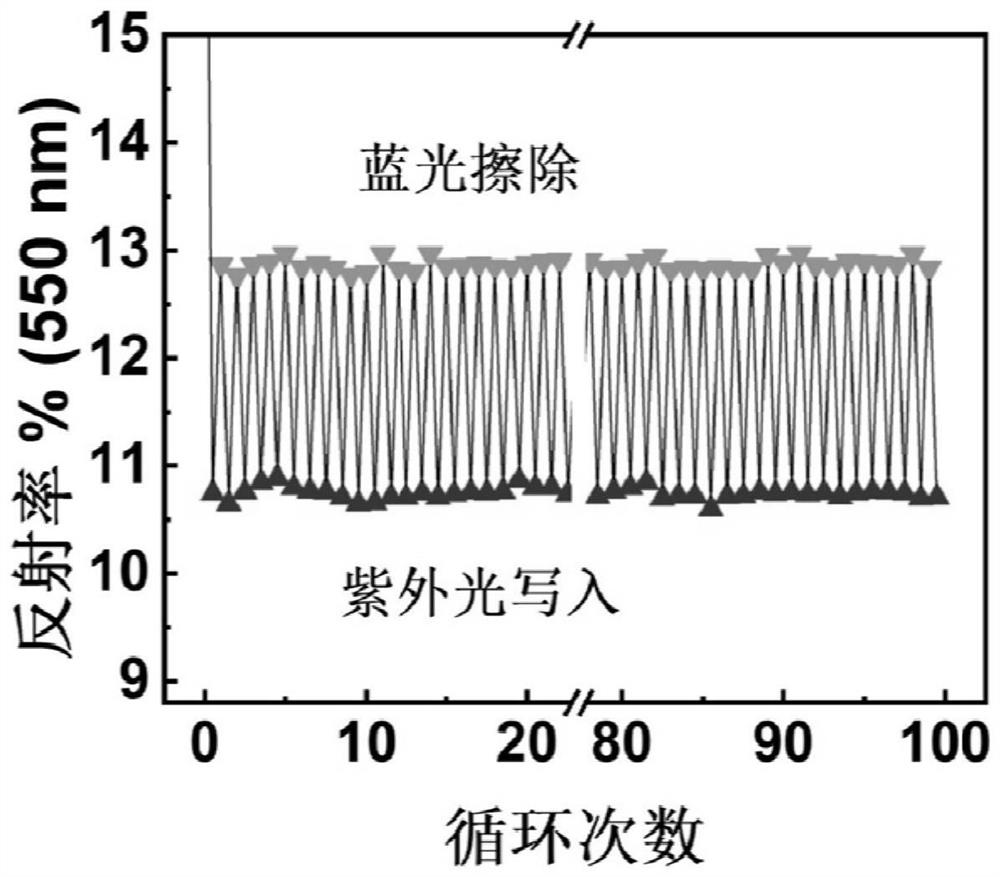A kind of photochromic ternary copolyester and its preparation method and application
A ternary copolyester, photochromic technology, used in color-changing fluorescent materials, chemical instruments and methods, optics, etc., can solve the problems of difficult degradation, high cost of photochromic polyester, poor mechanical properties, etc. Photochromic, sustainable development, high production efficiency
- Summary
- Abstract
- Description
- Claims
- Application Information
AI Technical Summary
Problems solved by technology
Method used
Image
Examples
preparation example Construction
[0067] In some embodiments, the preparation method includes: reacting the first mixed reaction system at 160-260° C. for 2-6 hours to obtain an intermediate product.
[0068] In some embodiments, the preparation method includes: reacting the second mixed reaction system in a vacuum environment at 190-300°C for 1-8 hours to obtain a photochromic ternary copolyester, the vacuum of the vacuum environment The degree is below 300Pa.
[0069] In some embodiments, the preparation method specifically includes: making the compound containing component A (ie, azobenzene compound), component B (ie, fatty dibasic acid or esterified product thereof), component C (ie, the second fat dihydric alcohol), esterification or transesterification catalyst, and react at 160-260°C for 2-6h to obtain an intermediate product; then add a polycondensation catalyst to react at 190-300°C and vacuum for 1-8h to obtain a photochromic three meta-copolyester.
[0070] Further, the preparation method of the p...
Embodiment 1
[0108] Mix azobenzenediol (formula 3), succinic acid, and decanediol (the second fatty diol) according to a molar ratio of 0.01:1:0.99, and then add a catalyst (tetrabutyl titanate, based on butyl The diacid is 0.2mol%) and the catalyst (antimony trioxide, based on succinic acid is 0.1mol%), are added to the reactor, under the condition of nitrogen protection, the temperature is raised to 160°C, the reaction is 6h, the vacuum is 60Pa, and the temperature is raised React at 300°C for 8 hours to obtain a photochromic ternary copolyester (structure as shown in formula 4). The photochromic response speed is 10 seconds, and it can be completely degraded in 180 to 240 days in outdoor natural soil.
[0109]
[0110] Formula (3)
[0111]
[0112] Formula (4)
[0113] The 1HNMR spectrum of azobenzenediol (formula 3) in the present embodiment is as follows figure 1 As shown, the reflectance curve of the photochromic ternary copolyester photochromism obtained finally is as follow...
Embodiment 2
[0115] Mix azobenzenediol (Formula 3), adipic acid, and decanediol (the second fatty diol) according to the molar ratio of 0.05:1:0.95, and then add the catalyst (tetrabutyl titanate, based on The diacid is 5mol%) and the catalyst (antimony trioxide, based on adipic acid is 5mol%), are added to the reactor, under the condition of nitrogen protection, the temperature is raised to 210°C, the reaction is 2h, the vacuum is 60Pa, and the temperature is raised to 300 ℃, reacted for 8 hours, and obtained the photochromic ternary copolyester (structure as in formula 5), whose photochromic response speed is 10 seconds, and can be completely degraded in 180 to 240 days in outdoor natural soil.
[0116]
[0117] Formula (5)
PUM
| Property | Measurement | Unit |
|---|---|---|
| tensile strength | aaaaa | aaaaa |
| glass transition temperature | aaaaa | aaaaa |
| wavelength | aaaaa | aaaaa |
Abstract
Description
Claims
Application Information
 Login to View More
Login to View More - R&D
- Intellectual Property
- Life Sciences
- Materials
- Tech Scout
- Unparalleled Data Quality
- Higher Quality Content
- 60% Fewer Hallucinations
Browse by: Latest US Patents, China's latest patents, Technical Efficacy Thesaurus, Application Domain, Technology Topic, Popular Technical Reports.
© 2025 PatSnap. All rights reserved.Legal|Privacy policy|Modern Slavery Act Transparency Statement|Sitemap|About US| Contact US: help@patsnap.com



